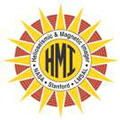
|
HMI Team Workshop:
Local Helioseismology Pipelines Stanford University March 7-9, 2007 |

|
HMI Team Workshop:
Local Helioseismology Pipelines Stanford University March 7-9, 2007 |
INPUTS
expect calibrated Dopplergrams, photograms, line-depth?, of
Uniform quality (whatever that means), mapped with a uniform
plate scale to something close to the observed pixel resolution,
with sufficient ancillary data to remap the photosphere and
possibly detrend the data: image center location, plate scale,
effective observing time, observer location and velocity
inversion kernels
solar model for fluid dynamic diagnostics (Model S) and for
sound-speed inversions
OUTPUT
maps of inverted V,c as data segments of common records (along
with errors, inversion coefficients for multiple data
series with primary keys of Carrington Time (center of tracking
time interval, keyed to equal intervals in central meridian longitude
(geocentric or at SDO?) and Carrington longitude and latitude
Each series characterized by different surface grid spacing,
cadence, and depths
fit parameters with errors for each set used for above (i.e.
each tracked cube)
Grid spacings (= 0.5 track cube diameter) selected from range
(1deg, 2deg, 4º, 8deg, 16deg) approx - total of 3—5 series
coverage to be complete within region such that outermost edge
of tracked data within 80deg of disc center; grid locations
appropriate integral multiples of spacing, with longitudes
characterized by center of tracking interval
Cadence TBD in range ~3hr - 15hr, fixed to simple fractions of
Carrington rotation, e.g. 15deg of rotation, 5 deg of rotation...
oberving interval twice cadence
PROCEDURES
tracking at rate for fixed model - either agreed-upon in advance,
or one that minimzes variance in mean zonal velocity profile at
surface (3 param in cos(lat)) over say first 3 rotations of HMI
data (go back and redo); use Postel's projection, cubic convolution
interpolation for now, but revisit.
power spectra apodized with circular symmetry in k-space to 0 power
at edge of region
ring fits by two procedures (Haber, Basu), both subject to future
refinement and modifications
inversions by RLS and OLA for both fitting procedures, as above
RESEARCH TASKS
1. Try using larger rings for getting down to tachocline (LONG-TERM)
2. Global fitting of power spectrum rather than individual ridges (")
3. Characterize results from both methods for fits to MDI Hi-Res data
at grid sizes of 2-16deg, in time ranges 4-15 hrs in order to
optimize selection of output tilings (SHORT-TERM 9/1)
4. Calculate 3-d inversion kernels and develop 3-d inversions
(LONG-TERM?)
5. Forward calculations (LONG-TERM)
6. Inversions from artifical data of Stein et al., Hanasoge
(SHORT-TERM?)
TESTING/VALIDATION
Run existing and pipeline code on MDI Hi-Res data in traditional
environment and in DRMS
TASKS/RESPONSIBLE PEOPLE
port fastrack and powrspec - Bogart
port ringfit11 (Basu style) - Bogart, Soares
port ringfitaz (Haber style), include consolidation into single
module - Haber, González
provide FORTRAN binding to API for above - Suarez
port SSW inversions - Haber
port Basu inversions - Basu, Bogart
Analyze Stein artificial data - ?
Analyze Hanasoge artificial data - González
Run characterization (research 3) - Bogart, Haber, Basu
Invert large-rings data (reearch 1) - Hill
SCHEDULE
1. FORTRAN binding 15 May (Suarez)
2. port MDI code 15 June (Bogart, Soares)
3. port GONG/JILA code 15 June (González, Haber)
4. port Yale code 1 July (Basu)
4.5 import MDI spectra to DRMS 15 May (Bogart)
5. verification 15 Aug (tutti)
a. specification of tracking input, output 1 Apr (Bogart, Schou)
b. specification and import of 1D kernels 1 Apr (Haber, Basu)
c. specification and import of 3D kernels 1 Sep (Haber)
d. specify & import model 1 May (Hill)
e. strawman data product specification 1 Apr (Haber, Bogart)
f. refine data product specification 1 Sep (")
g. output keyword specifications 1 May (Bogart)
h. artificial data analysis (Hanasoge) 1 Jun (González)
i. artificial data analysis (Stein et al.) ?
j. determine appropriate tracking rate suitable 15 Aug (Scherrer)
for both rings and time-distance (and other?)